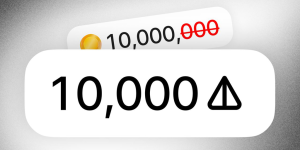Lore Machine AI Tool for Film and TV Writers Claims a ‘Bullet-Proof Use Case’
12 months ago CryptoExpert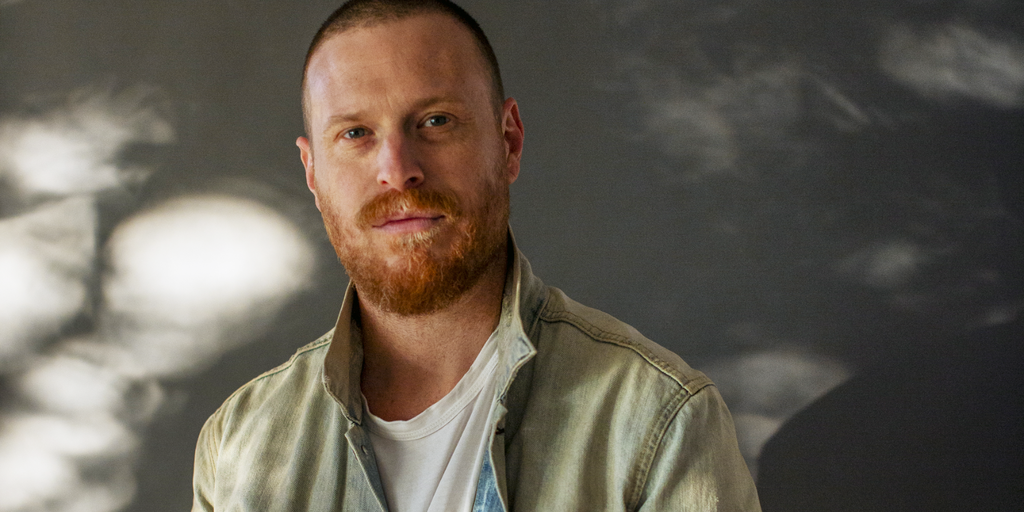
[ad_1]
Generative AI image tools like Runway, Stable Diffusion, and Midjourney have redefined what it means to be an artist in 2023. While some creators may be wary of artificial intelligence, Los Angeles-based Lore Machine says its new platform can be a powerful ally for Hollywood writers.
”We initially built the system for screenwriters to visualize their scripts—that was certainly the first cohort to start signing up,” Lore Machine founder Thobey Campion told Decrypt. “Living in LA, the most evident use case for Lore Machine was the Hollywood production system.
”We spoke to some of these writers—they saw the tool as a way to help sell their pitches to producers and studios,” he continued. “Screenwriters could build visuals to help sell their scripts to producers; producers could use multimedia to entice studios; studios need affordable pre-visualization solutions for storyboards; and directors need a new way to communicate their evolving vision and establish consensus across key stakeholders and crew.”
Launched in 2021 by Campion, Lore Machine uses generative AI to create visual presentations like storyboards, comic books, and—in a future release—motion graphics based on scripts, books, and articles uploaded by users. Lore Machine, Campion explained, uses calls to OpenAI’s GPT and Stability AI’s Stable Diffusion to create its visuals.

There are currently 25,000 people on the Lore Machine waitlist, said Campion, a writer and technologist. He that the platform is expected to launch in 2024, and that “the interest in multimedia generation at story scale seems to be there.”
He explained that users are able to customize text and image descriptions inside of the Lore Machine interface, as well as choose different image styles, including fantasy, anime, and cyberpunk.
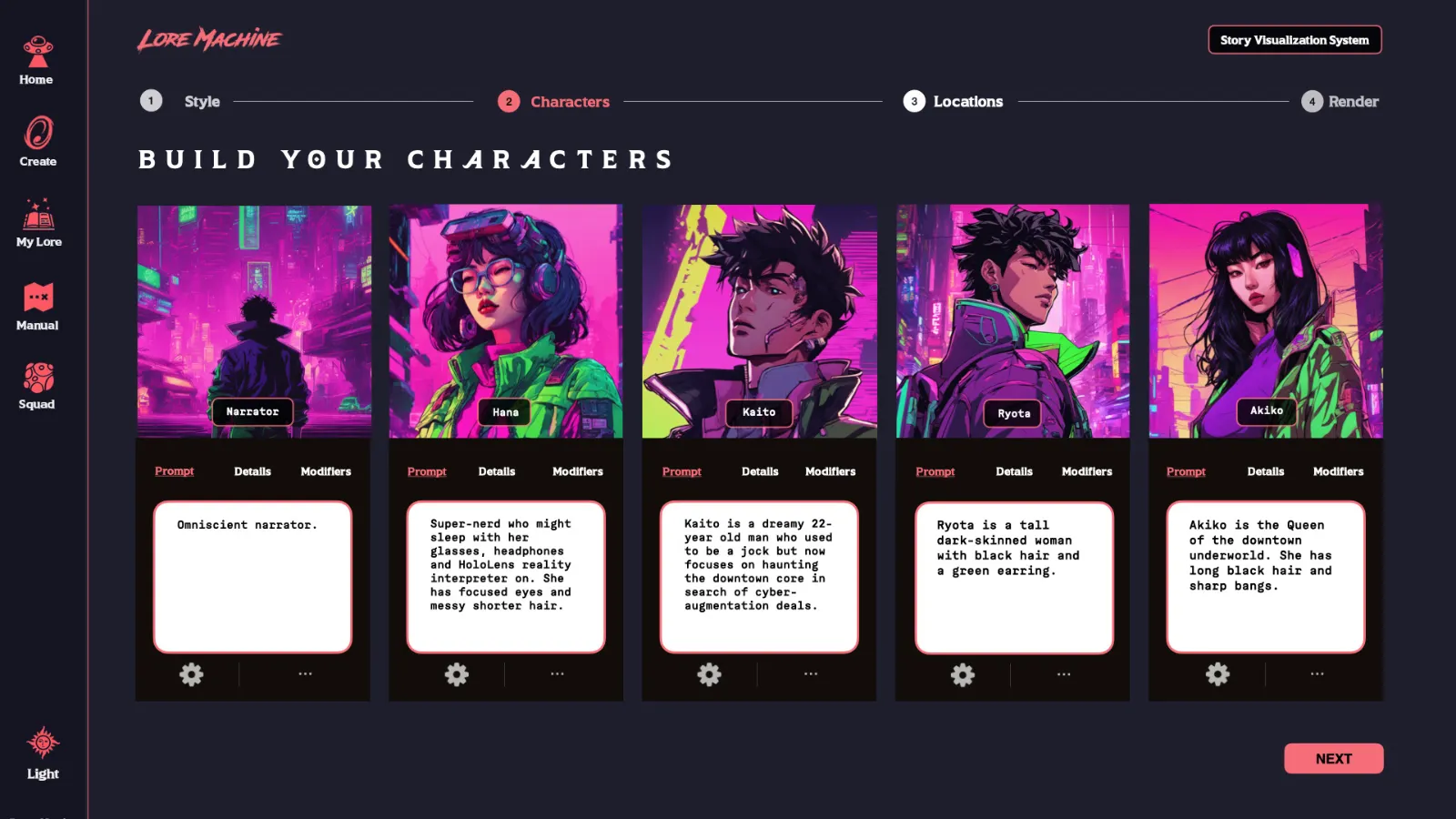
Campion said the company has also received a lot of interest from the game development community as a useful tool for building what Campion called “foundational game art.” Even corporations and film studios have also expressed interest.
To address the collaborative nature of the industry, Campion said Lore Machine will offer unlimited accounts and licensed seats for “power users.”
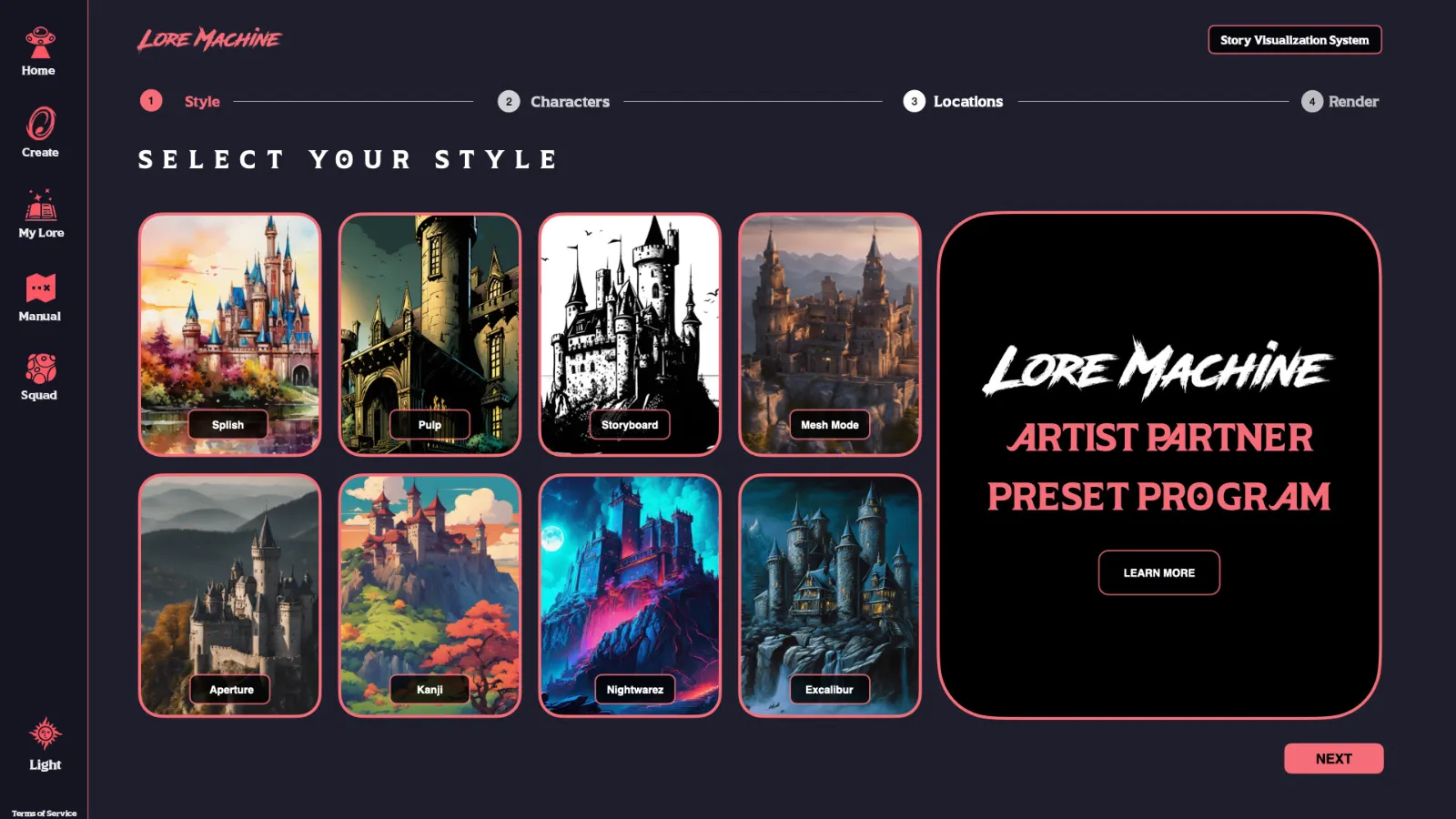
Comparing his project to Robert Moog’s synthesizer released in 1964, Campion said Lore Machine could similarly transform storytelling and content creation using multimodal AI models instead of AI generators that only produce one type of content like text or images.
While Campion acknowledged that these traditional models are impressive, he pointed out some of their limitations.
“What these systems aren’t so good at doing is building stories,” Campion said. “And that was the genesis of [Lore Machine].”
Campion has a long career in creating multimedia. From 2004 to 2020, Campion served as the head of publishing for Vice Media. In 2009, Campion founded the technology wing of Vice Media, Motherboard.
While Campion did not give specifics on investment funds, he said Lore Machine is backed by a group of partners, including DAO Jones and the 100 Acres investment fund. Those investors got an early look at what the tool could do.
“Our early prototypes were adaptations of Clifford Simak’s Contraption and Samuel T. Coleridge’s Rime of the Ancient Mariner, which drew a lot of interest from the burgeoning comic book world,” Campion said. “We’ve since been building partnerships with online comic communities and some traditional comic and manga studios.”
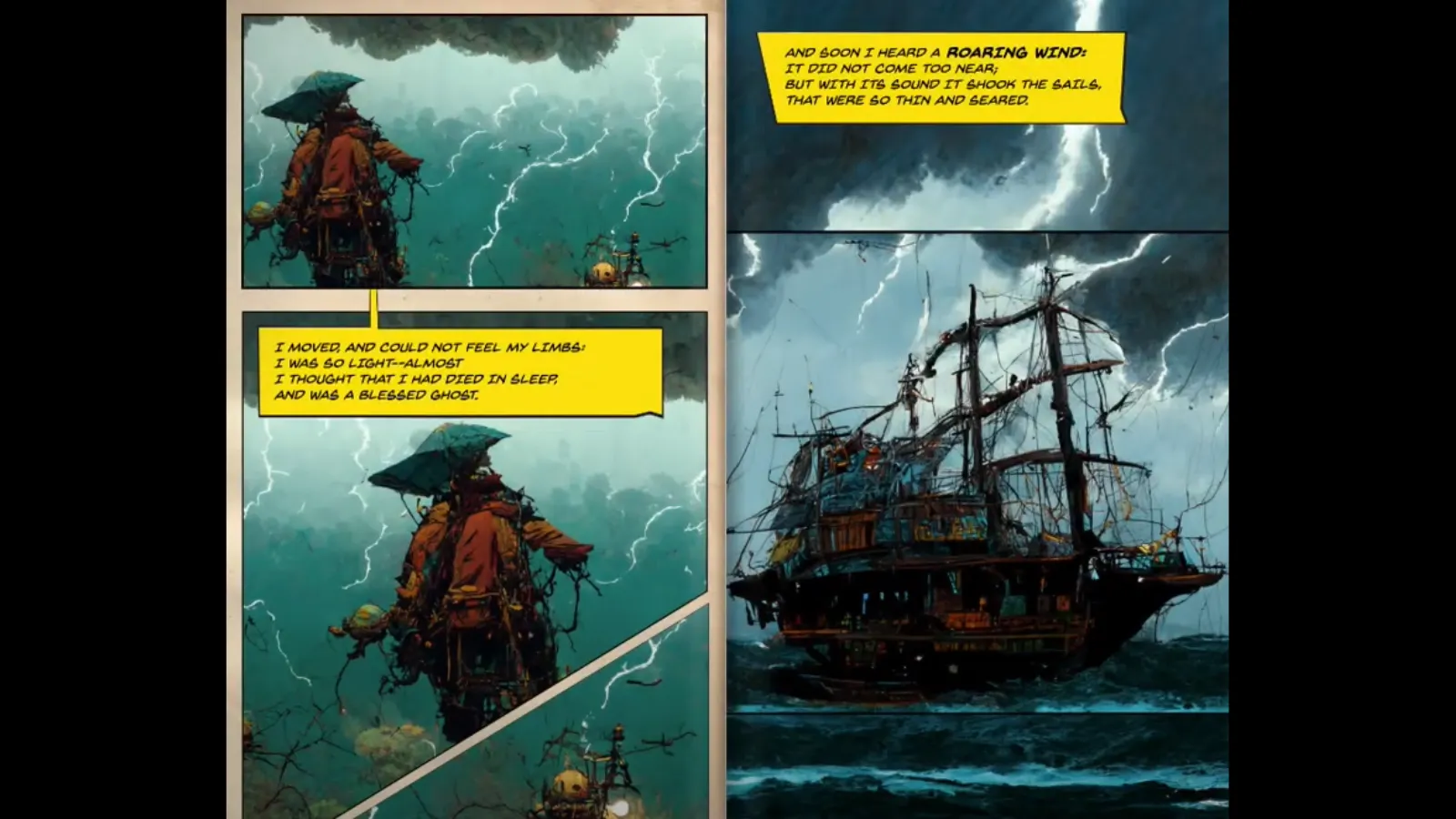
“We are exploring all types of partnerships with other single-modal AI systems, with the main objective being creating the ultimate multimodal storytelling system,” Campion added. “For us, we look at it more as a generator-agnostic system, where people will eventually be able to bring whatever generator they want to use and be able to plug it into the system.”
Users can export images and text with characters, locations, and scenes in high resolution, Campion said, adding that Lore Machine intentionally kept export options open-ended to encourage creativity and not dictate how users use the assets.
When it comes to privacy and protecting intellectual property, Campion said Lore Machine uses a proprietary file format called “.lore” that is stored in the cloud and records story decisions, style, and text that the user owns.
“We built this file format for a number of different reasons,” Campion said. “Firstly was for collaboration so people can repeat outputs,” he said. “What we realized right away was that the “.lore” file format was really useful for provenance, and so, as you’re building your story, it’s recording in the background, and that is all your property. We don’t have access to it.”
As for the concerns artists have about AI, Campion said Lore is committed to the ethical use of the technology, building AI-generated works while ensuring that they are original and respect existing copyrights. For example, using artist and writer’s work without permission is not allowed on Lore Machine.
“AI is obviously a charged topic in Hollywood and became a key issue in both the WGA and SAG-AFTRA strikes,” he said. “But we’d been deep into exploring how generative can be responsibly integrated into workflows—we were lasered in on how generative [AI] could be used to benefit writers.
“During the WGA strike, we posted an advisory opportunity for screenwriters on LinkedIn, and we received 1,100 applications in 72 hours, and I met with 63 of those applicants,” Campion recalled. “Invariably, I found that screenwriters weren’t so much anti-AI, they just didn’t want to be left out of the conversation.”
And once the screenwriters got their hands on Lore Machine, they were on board.
“When they sat down to experiment with the new tools, they were seeing what we were seeing,” Campion said. ”Empowerment.”
He conceded, however, that current copyright laws are inadequate for the complexities introduced by generative technologies.
As generative AI becomes more popular, companies, artists, and writers are taking AI developers to court on claims of copyright infringement.
In September, Game of Thrones and House of the Dragon creator George R.R. Martin joined a lawsuit with other authors, including John Grisham and Elin Hilderbrand, against ChatGPT creator OpenAI, alleging their works had been used to train the chatbot without permission. In October, Universal Music Group filed a lawsuit against Claude AI developer Anthropic, claiming the chatbot was fed copyrighted song lyrics in its training data.
The Hollywood strikes were fueled by writers and actors who saw the technology as a way to replace them or cut them out of the pay they felt they deserved.
Despite all this, Campion said he is optimistic about the future of the technology and what it can mean for storytelling and human connection.
“The cat is out of the bag, and we have some serious responsibilities as humanity about how we use these and how we treat each other,” Campion said. “I believe it’s a very significant opportunity to demonstrate that humans can, in fact, be very good.”
“I have to believe that there is an ethical way to make our way through this new challenge,” Campion contoniued. “So I tend to think in terms of a very promising future in which there is more creativity.”
Edited by Ryan Ozawa.
Stay on top of crypto news, get daily updates in your inbox.
[ad_2]
Source link




